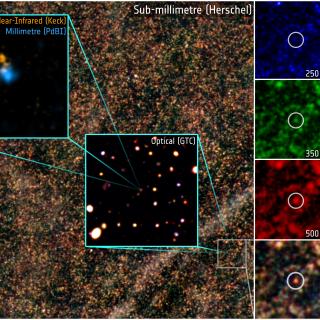Riechers, Dominik A.; Bradford, C. M.; Clements, D. L.; Dowell, C. D.; Pérez-Fournon, I.; Ivison, R. J.; Bridge, C.; Conley, A.; Fu, Hai; Vieira, J. D.; Wardlow, J.; Calanog, J.; Cooray, A.; Hurley, P.; Neri, R.; Kamenetzky, J.; Aguirre, J. E.; Altieri, B.; Arumugam, V.; Benford, D. J.; Béthermin, M.; Bock, J.; Burgarella, D.; Cabrera-Lavers, A.; Chapman, S. C.; Cox, P.; Dunlop, J. S.; Earle, L.; Farrah, D.; Ferrero, P.; Franceschini, A.; Gavazzi, R.; Glenn, J.; Solares, E. A. Gonzalez; Gurwell, M. A.; Halpern, M.; Hatziminaoglou, E.; Hyde, A.; Ibar, E.; Kovács, A.; Krips, M.; Lupu, R. E.; Maloney, P. R.; Martínez-Navajas, P.; Matsuhara, H.; Murphy, E. J.; Naylor, B. J.; Nguyen, H. T.; Oliver, S. J.; Omont, A.; Page, M. J.; Petitpas, G.; Rangwala, N.; Roseboom, I. G.; Scott, D.; Smith, A. J.; Staguhn, J. G.; Streblyanska, A.; Thomson, A. P.; Valtchanov, I.; Viero, M.; Wang, L.; Zemcov, M.; Zmuidzinas, J.
Bibliographical reference
Nature, Volume 496, Issue 7445, pp. 329-333 (2013).
Advertised on:
4
2013
Journal
Citations
503
Refereed citations
468
Description
Massive present-day early-type (elliptical and lenticular) galaxies
probably gained the bulk of their stellar mass and heavy elements
through intense, dust-enshrouded starbursts--that is, increased rates of
star formation--in the most massive dark-matter haloes at early epochs.
However, it remains unknown how soon after the Big Bang massive
starburst progenitors exist. The measured redshift (z) distribution of
dusty, massive starbursts has long been suspected to be biased low in z
owing to selection effects, as confirmed by recent findings of systems
with redshifts as high as ~5 (refs 2-4). Here we report the
identification of a massive starburst galaxy at z = 6.34 through a
submillimetre colour-selection technique. We unambiguously determined
the redshift from a suite of molecular and atomic fine-structure cooling
lines. These measurements reveal a hundred billion solar masses of
highly excited, chemically evolved interstellar medium in this galaxy,
which constitutes at least 40 per cent of the baryonic mass. A `maximum
starburst' converts the gas into stars at a rate more than 2,000 times
that of the Milky Way, a rate among the highest observed at any epoch.
Despite the overall downturn in cosmic star formation towards the
highest redshifts, it seems that environments mature enough to form the
most massive, intense starbursts existed at least as early as 880
million years after the Big Bang.
Related projects

Formation and Evolution of Galaxies: Observations in Infrared and other Wavelengths
This IAC research group carries out several extragalactic projects in different spectral ranges, using space as well as ground-based telescopes, to study the cosmological evolution of galaxies and the origin of nuclear activity in active galaxies. The group is a member of the international consortium which built the SPIRE instrument for the
Ismael
Pérez Fournon